In breast discharge, mammogram unremarkable but ductography definitive
A 54-year-old patient presented for evaluation of spontaneous left breast discharge. The patient is status post-right mastectomy with TRAM reconstruction in 1999. The patient states she has noted left breast discharge for quite some time.
Clinical History
A 54-year-old patient presented for evaluation of spontaneous left breast discharge. The patient is status post-right mastectomy with TRAM reconstruction in 1999. The patient states she has noted left breast discharge for quite some time.
Findings

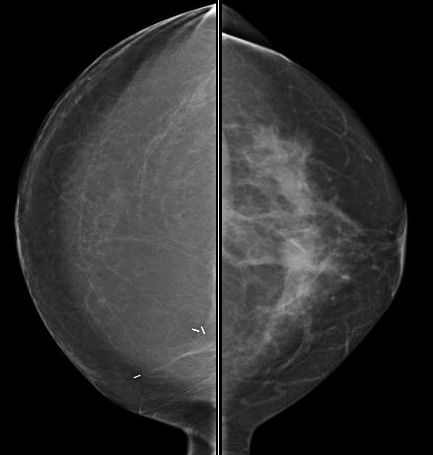
Mammography reveals postsurgical changes from TRAM reconstruction in the right breast. The left breast reveals no abnormality (Figures 1A and 1B).
Upon examination, discharge was expressed from two ducts in the left breast. In the central portion of the left nipple, a brownish discharge at 12 o’clock was present and, in addition, a clear discharge in the left 6 o’clock portion of the nipple. Slides were obtained and sent for pathology.
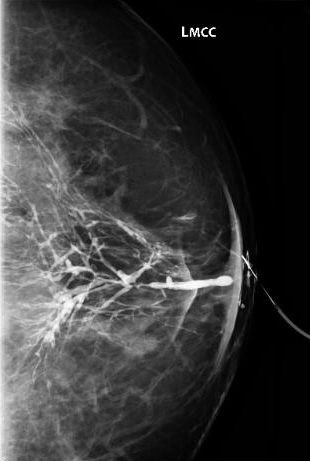
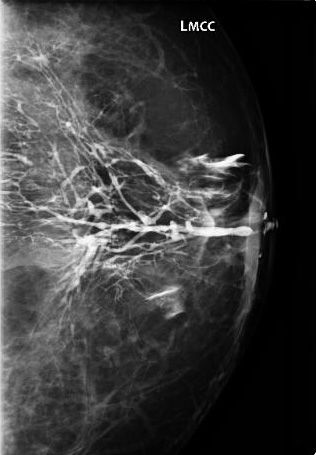
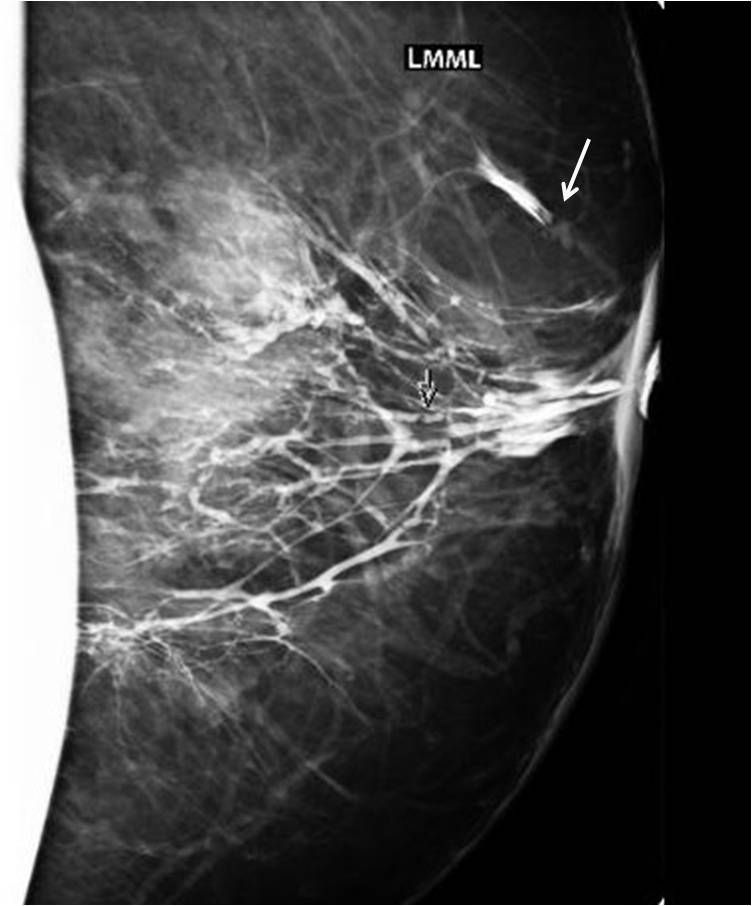
A left ductogram was performed; the left breast duct in the 12 o’clock area of the nipple was cannulated centrally and the duct opacified with contrast (Figure 2A and 2B). This revealed multiple areas of intraluminal masses throughout the ductal system (Figure 2C).
Breast MRI for extent of disease revealed extensive diffuse enhancement involving the entire breast (Figure 3). This enhancement extends from the nipple to the chest wall.
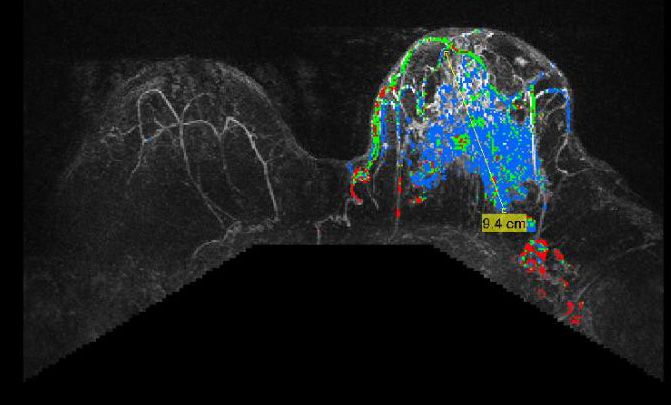
Diagnosis
Pathology of the left nipple discharge revealed atypical ductal epithelium. Stereotactic core biopsy of the ductographic abnormalities was also performed. Pathology revealed ductal carcinoma in situ, nuclear grade 3.
Discussion
This case demonstrates the importance of a complete work-up when a patient presents with discharge, including mammography and ductography. In this case, the mammogram was unremarkable; the ductogram revealed multiple intraluminal masses, which upon biopsy proved to be carcinoma. Dr. Destounis is managing partner and a radiologist at Elizabeth Wende Breast Care in Rochester, NY.
The Reading Room Podcast: Current Perspectives on the Updated Appropriate Use Criteria for Brain PET
March 18th 2025In a new podcast, Satoshi Minoshima, M.D., Ph.D., and James Williams, Ph.D., share their insights on the recently updated appropriate use criteria for amyloid PET and tau PET in patients with mild cognitive impairment.
Meta-Analysis Shows Merits of AI with CTA Detection of Coronary Artery Stenosis and Calcified Plaque
April 16th 2025Artificial intelligence demonstrated higher AUC, sensitivity, and specificity than radiologists for detecting coronary artery stenosis > 50 percent on computed tomography angiography (CTA), according to a new 17-study meta-analysis.
New bpMRI Study Suggests AI Offers Comparable Results to Radiologists for PCa Detection
April 15th 2025Demonstrating no significant difference with radiologist detection of clinically significant prostate cancer (csPCa), a biparametric MRI-based AI model provided an 88.4 percent sensitivity rate in a recent study.